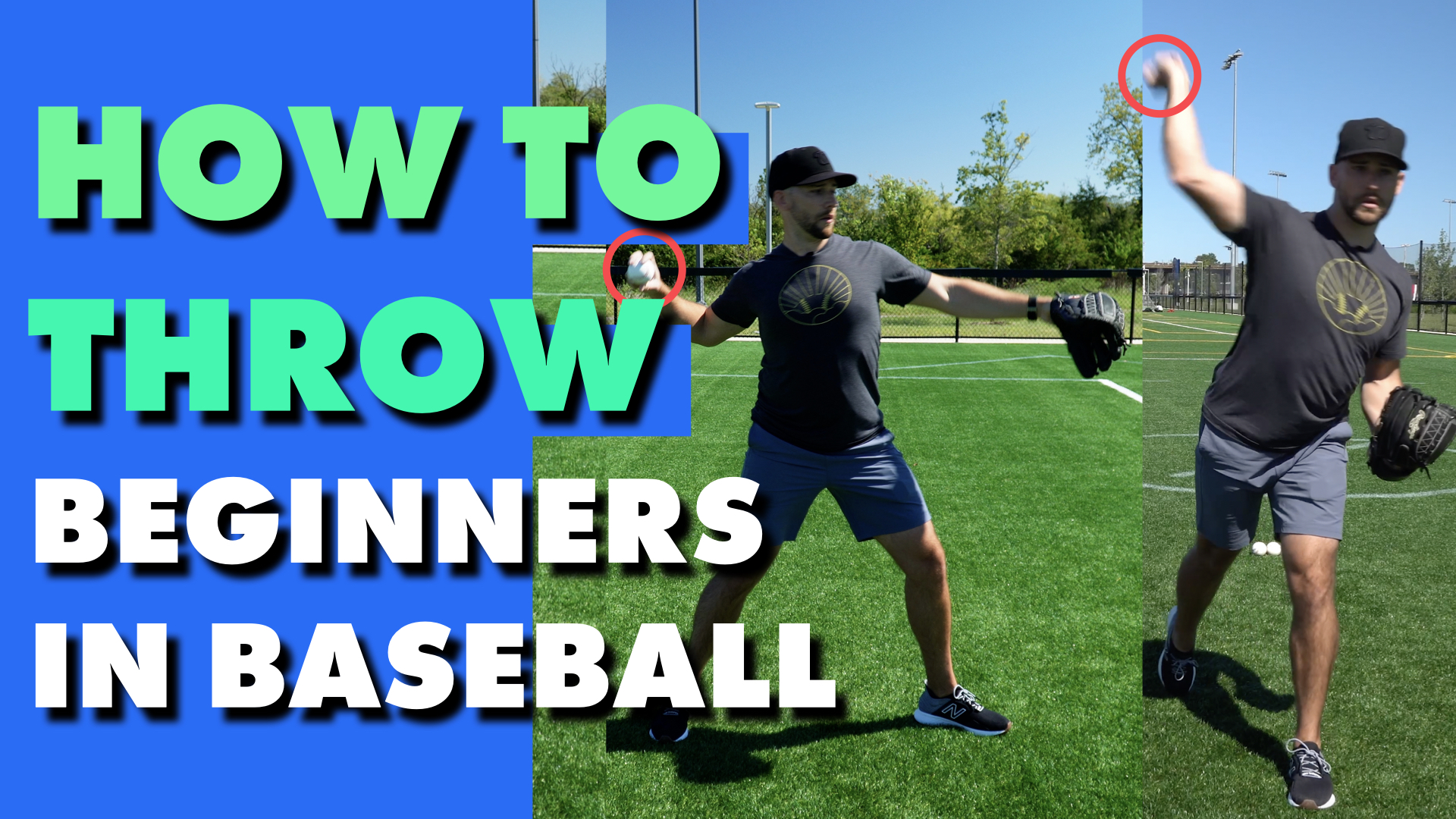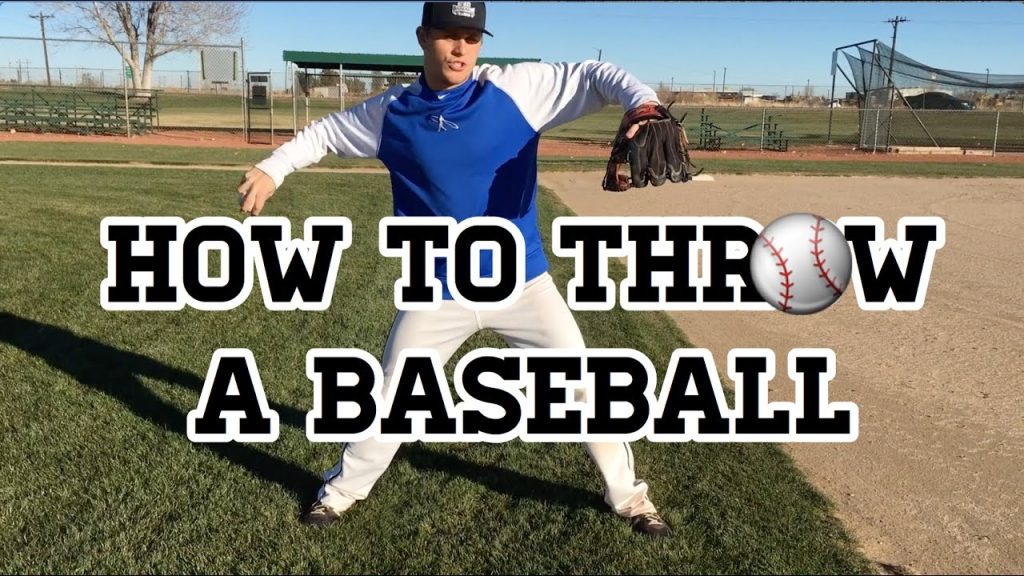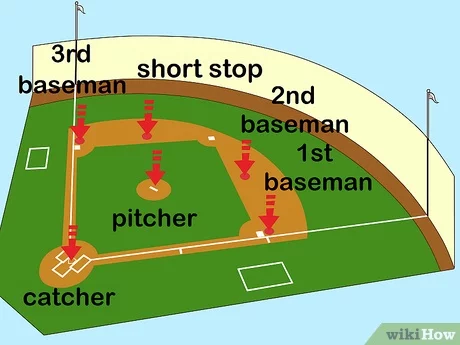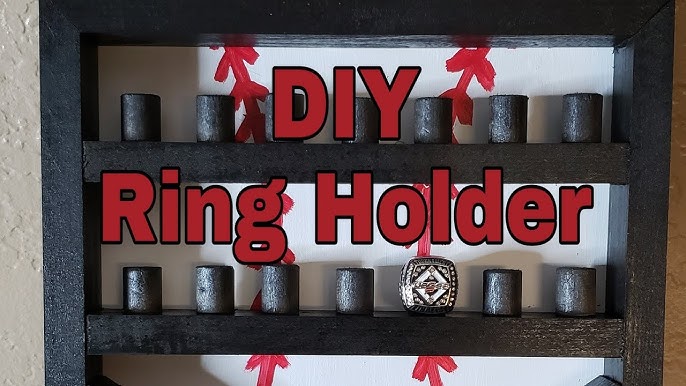Throwing a baseball involves a few simple steps. First, you need to grip the ball correctly.
Then, use proper body mechanics to throw it. Learning how to throw a baseball can be a fun and rewarding experience. Whether you’re a beginner or want to improve your skills, knowing the basics is essential. Throwing a baseball correctly helps prevent injuries and boosts your performance on the field.
With practice and the right technique, you can throw like a pro. This guide will walk you through the process step-by-step, ensuring you understand each part. Get ready to pick up that ball and throw it with confidence! Let’s dive in and explore the fundamentals of throwing a baseball.
Introduction To Baseball Pitching
Introduction to baseball pitching is exciting and fundamental to the sport. Pitching is the act of throwing the baseball towards the batter. It is a skill that requires practice, precision, and proper technique. Understanding the history and importance of pitching can enhance your appreciation of the game.
History Of Pitching
Pitching has evolved since the early days of baseball. In the 19th century, pitchers threw underhand. Over time, the rules changed, and overhand pitching became standard. Different styles emerged, creating a rich history of techniques. Today, pitchers use a variety of throws to challenge batters.
Importance Of Proper Technique
Proper technique is crucial for effective pitching. It helps prevent injuries and improve performance. Good form includes the right grip, stance, and release. Consistent practice with correct techniques can make a significant difference. It allows you to throw more accurately and with greater speed. Learning the basics can set the foundation for advanced skills.
Basic Mechanics
Understanding the basic mechanics of throwing a baseball is crucial for beginners. It lays the foundation for developing a strong and accurate throw. By focusing on the core elements, you can improve your technique and prevent injuries.
Grip The Baseball
Start by gripping the baseball correctly. Use your index and middle fingers to hold the ball across the seams. Place your thumb underneath for support. Ensure a firm, but not tight, grip. This helps control the ball’s direction and speed.
Stance And Balance
Adopt a balanced stance with your feet shoulder-width apart. Your knees should be slightly bent. Position your non-dominant shoulder towards your target. This stance provides stability and control during the throw.
Maintain your balance throughout the motion. Shift your weight from your back foot to your front foot as you throw. This weight transfer generates power and improves accuracy.
Windup And Delivery
Learning how to throw a baseball involves mastering the windup and delivery. The windup sets the stage for a powerful throw, while the delivery ensures accuracy and speed. Both parts are crucial for a successful pitch.
Starting The Windup
Stand with your feet shoulder-width apart. Hold the ball in your glove. Your body should face home plate. Keep your knees slightly bent. This stance provides balance and readiness.
Begin the windup by lifting your front leg. Raise it to waist height. Rotate your torso slightly towards second base. Your glove and throwing hand should come together in front of your chest. Maintain a steady pace throughout this motion.
Ensure your weight shifts to your back leg. This adds power to your throw. Pause briefly at the peak of your leg lift. This helps with timing and control.
Executing The Delivery
Start the delivery by driving your front leg towards home plate. Your body should follow this motion. Your throwing arm should move in a circular motion behind you. Keep your elbow at shoulder height. This position reduces stress on your arm.
As your front foot lands, rotate your torso towards home plate. This action transfers your weight from your back leg to your front leg. Your throwing arm should come forward, releasing the ball. Aim to release the ball when your hand is in line with your head.
Follow through is crucial. Your arm should continue its motion after releasing the ball. Your body should naturally move forward. This ensures a smooth and powerful throw. Practice this sequence until it feels natural.
| Step | Key Points |
|---|---|
| Windup | Feet shoulder-width apart, lift front leg, shift weight back. |
| Delivery | Drive front leg forward, rotate torso, follow through. |
In summary, combining the windup and delivery creates a powerful pitch. Focus on smooth, controlled movements. Practice regularly for improvement.

Credit: danblewett.com
Different Pitch Types
Learning different pitch types can elevate your baseball game. Pitching isn’t just about speed; it’s about strategy. Each pitch type has unique characteristics. They can confuse the batter and make you a stronger pitcher. Let’s explore two popular pitch types: the fastball and the curveball.
Fastball
The fastball is the most common pitch in baseball. It is known for its speed. Most pitchers start learning with this pitch. To throw a fastball, grip the ball with your index and middle fingers. Place them across the seams. Your thumb should be underneath, supporting the ball.
Keep your grip firm but relaxed. As you throw, snap your wrist forward. This gives the ball extra speed. The fastball is fast and straight. It relies on velocity to beat the batter. Many pitchers can throw a fastball at over 90 miles per hour. Practice regularly to increase your speed.
Curveball
The curveball is a pitch with a lot of movement. It is slower than a fastball. But it can be harder to hit. To throw a curveball, grip the ball with your middle finger on the seam. Your index finger should be next to it, not on the seam. Place your thumb underneath the ball.
As you throw, rotate your wrist. This gives the ball a spinning motion. The spin causes the ball to drop suddenly. This movement can trick the batter. They might swing too early or miss entirely. Mastering the curveball takes time. Practice the wrist rotation and grip to get it right.
Common Mistakes
Many people grip the baseball too tightly, which affects control. Others use poor foot positioning, leading to weak throws. Proper follow-through often gets ignored, resulting in inaccurate pitches.
Throwing a baseball may seem simple. But many players make common mistakes. These errors can reduce your accuracy and speed. Here, we discuss the most common mistakes. Knowing these can help you improve your game.Overthrowing
Overthrowing is a frequent problem. Many players try to throw too hard. This can lead to poor accuracy. It can also cause arm injuries. To avoid this, focus on control over speed. A relaxed arm motion works best. Proper technique is crucial for a strong, accurate throw.Incorrect Grip
Another common mistake is an incorrect grip. Holding the ball wrong affects your throw. It can cause the ball to spin incorrectly. This reduces accuracy. Grip the ball with your fingers, not your palm. Ensure your fingertips are on the seams. A proper grip is essential for a good throw. “`Strength And Conditioning
Strength and conditioning are crucial for throwing a baseball effectively. Strong muscles help you throw faster and more accurately. Conditioning helps prevent injuries.
Focus on both arm exercises and full-body workouts. This ensures balanced strength and flexibility. Here are some important exercises to include in your routine.
Arm Exercises
Strong arms are essential for throwing a baseball. Start with shoulder exercises. Shoulder presses and lateral raises build shoulder strength. Use light weights to avoid injury.
Next, work on your forearms. Wrist curls and reverse curls strengthen your forearm muscles. Grip strength is important for holding the baseball. Use a stress ball or grip trainer.
Don’t forget your triceps and biceps. Tricep extensions and bicep curls help with throwing power. Aim for balanced development of both muscle groups.
Full-body Workouts
Baseball requires full-body strength. Compound exercises work multiple muscle groups. Start with squats and deadlifts. These build leg and core strength.
Add in lunges and step-ups. These exercises improve balance and flexibility. Strong legs are crucial for a powerful throw.
Core exercises are also important. Planks and Russian twists build core stability. A strong core helps transfer power from your legs to your arms.
Finally, include cardiovascular exercises. Running or cycling improves overall fitness. Good cardio helps you stay strong throughout the game.
Mental Preparation
Throwing a baseball requires not just physical skill, but also mental preparation. Your mind plays a crucial role in every pitch. This section will guide you through essential mental techniques to enhance your performance on the mound.
Focus Techniques
Maintaining focus is essential for every baseball player. Here are some techniques to help:
- Deep Breathing: Take slow, deep breaths to calm your mind.
- Visualization: Picture a successful throw in your mind.
- Positive Self-Talk: Encourage yourself with positive words.
- Routine: Develop a pre-throw routine to signal your brain to focus.
These techniques will help keep your mind clear and focused. Practice them regularly to see improvement.
Dealing With Pressure
Pressure can affect your performance on the field. Managing it is key to success.
Here are some tips to deal with pressure:
- Stay Present: Focus on the present moment, not past mistakes.
- Break It Down: Divide the game into smaller, manageable parts.
- Acceptance: Accept that pressure is part of the game.
- Preparation: Be well-prepared physically and mentally to boost confidence.
Handling pressure well can make a significant difference in your performance. Use these tips to stay calm and composed.
Practice Drills
To improve your baseball throwing skills, practice drills are essential. They help you refine your technique and gain confidence. Incorporating a variety of drills into your routine will enhance your ability to throw accurately and with power.
Bullpen Sessions
Bullpen sessions are crucial for pitchers. They allow you to work on your mechanics without the pressure of a game. Set up a bullpen area and focus on your pitching form. Pay attention to your grip, stance, and follow-through.
- Warm up with light throwing.
- Practice different pitches like fastballs and curveballs.
- Track your progress with a radar gun.
Consistency is key. Regular bullpen sessions will make you a better pitcher.
Fielding Practice
Fielding practice is equally important. It helps you react quickly and throw accurately from different positions. Practice fielding ground balls and fly balls. Work with a partner or use a machine to simulate game situations.
| Drill | Description |
|---|---|
| Ground Balls | Field ground balls and throw to first base. |
| Fly Balls | Catch fly balls and throw to home plate. |
Remember to stay low and keep your eyes on the ball. Practice these drills regularly to improve your fielding skills.
Tips From The Pros
Learning how to throw a baseball effectively can be a game changer. Expert advice can help you enhance your skills. Below, we share insights from Hall of Famers and modern techniques used by today’s top players.
Advice From Hall Of Famers
The legends of baseball have refined their techniques over years of experience. Here are some tips from the Hall of Famers:
- Grip: Hold the ball with your fingertips, not your palm. This ensures better control and spin.
- Stance: Balance your weight on your back foot. This provides power for the throw.
- Follow Through: Keep your arm moving forward after releasing the ball. This improves accuracy and reduces strain.
Modern Techniques
Modern baseball players use advanced techniques and tools to improve their throws. Here are some of the latest methods:
| Technique | Description |
|---|---|
| Video Analysis | Analyze your throwing motion using video. This helps identify and correct flaws. |
| Weighted Balls | Use weighted balls to build arm strength and improve speed. |
| Resistance Bands | Incorporate resistance bands into your training. They help strengthen the shoulder and arm muscles. |

Credit: www.dickssportinggoods.com

Credit: www.youtube.com
Frequently Asked Questions
How Do I Grip A Baseball Correctly?
To grip a baseball correctly, use the “four-seam” grip. Place your index and middle fingers across the seams. Your thumb should be underneath, resting on the smooth leather.
What Is The Proper Throwing Technique?
For proper throwing, align your body sideways to the target. Step forward with your non-throwing foot, rotate your hips, and throw with a full arm motion.
How Can I Increase My Throwing Speed?
To increase throwing speed, strengthen your arm and core muscles. Practice proper mechanics and ensure a strong follow-through.
What Exercises Improve Throwing Accuracy?
Improve throwing accuracy with drills like long toss, target practice, and balance exercises. Focus on consistent mechanics and proper grip.
Conclusion
Mastering the basics of throwing a baseball takes time and practice. Keep your grip firm but relaxed. Remember to use your whole body, not just your arm. Focus on accuracy before speed. Practice regularly and be patient with yourself. Over time, your skills will improve.
Enjoy the process and have fun on the field. Baseball is not just about skill; it’s also about passion and dedication. Keep these tips in mind, and you will see progress. Happy throwing!



